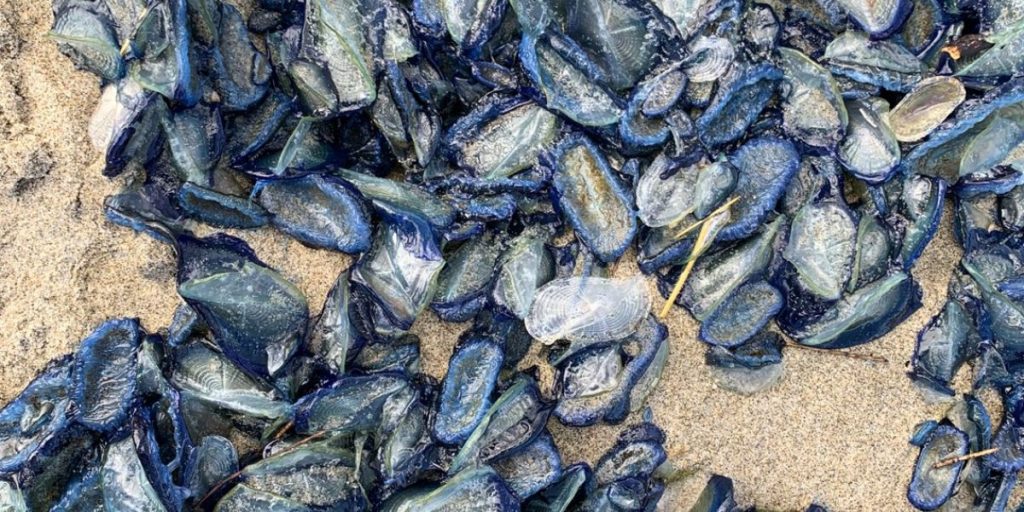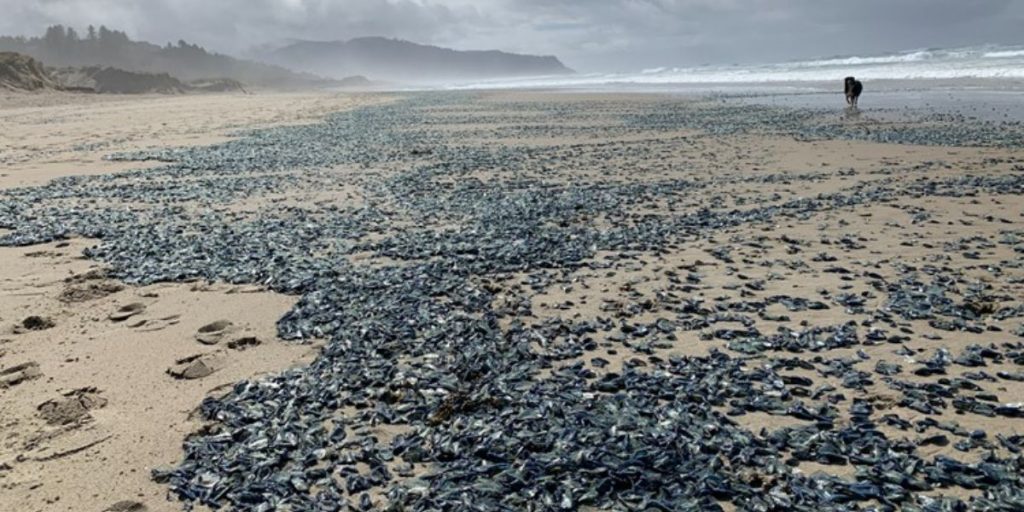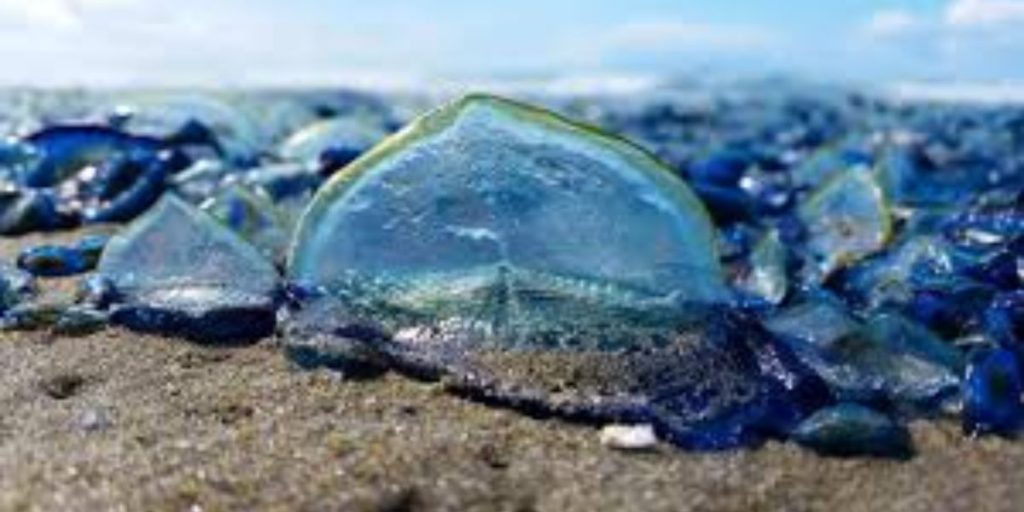Visitors to the Oregon Coast in recent weeks have noticed something peculiar along some lengths of the beach: enormous groups of little, blue-tinted organisms that resemble jellyfish, heaped up near the high water line.
Viewer Marcy McPherson provided KGW with a few photographs of the phenomena, which occurred Tuesday on a stretch of beach south of Pacific City. Her photographs reveal what appear to be thousands of creatures lining the shore for hundreds of feet. She thought that the eye-catching visitors could be flocks of a sea creature known as a blue velella.

The Seaside Aquarium announced the phenomenon on Facebook earlier this month, and it turns out the creatures are velellas, technically known as Velella velella (genus Velella, species Velella). They are also referred to as purple sails or by-the-wind sailors.
They are sometimes regarded as a type of jellyfish, but despite their similar look, the two organisms are more like relatives – according to the National Park Service, velellas and jellyfish are related through a large taxonomic category that also includes sea anemones and coral.
Velellas have two primary body parts: an iridescent blue or purple disk and a transparent “sail” disc that extends up from it. They live on the ocean’s surface and utilize the sail disk to capture wind and move around, according to the aquarium’s article. Wind from the west can cause them to wash up on Oregon’s beaches, where they dry out or are devoured by other animals.

According to Seaside Aquarium director Keith Chandler, they most commonly wash up in Oregon in the spring and summer, but they do occasionally show up at other times of year. Their arrival is largely weather-dependent and so less predictable or consistent than other annual coast phenomena such as whale migrations.
Are Velellas dangerous?

Not really.
According to Oregon State University, their blue color makes them mistaken for the venomous and extremely painful Portuguese man o’ war, however the man o’ war dwells in warmer climates. Most individuals won’t be upset by touching a velella, although OSU’s website advises against touching their eyes or lips afterwards.
OSU also advises against walking barefoot through the velella piles, and Chandler believes it’s always a good idea to keep pets and small children away from any sea critters that wash up on the beach.
Chandler added that huge mounds of velella can begin to smell terrible as they die, although they tend to dry out and become buried fairly rapidly.